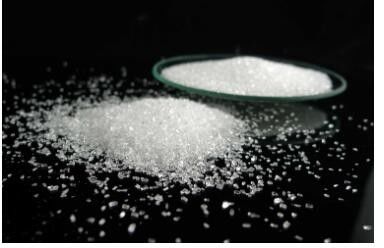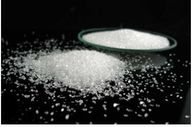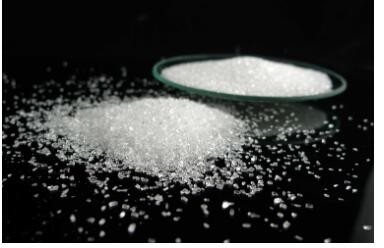Pharmaceutical grade magnesium sulfate heptahydrate 20-30 mesh
Molecular formula: MgSO4·7H2O Molecular weight: 246.37 CAS No: 10034-99-8
Specification
| Items |
Specification |
| Appearance |
White Crystal |
| Purity |
≥99% |
| MgSO4 |
≥48.59% |
| MgO |
≥16.2% |
| Mg |
≥9.8% |
| pH |
5.0-9.5 |
| Fe |
≤0.0008% |
| Pb |
≤0.0006% |
| As |
≤0.0002% |
) Magnesium sulfate can inhibit the central nervous system, relax skeletal muscles, have the effects of sedation, anti-spasm, and reduce intracranial pressure. It is often used to treat convulsions, eclampsia, uremia, tetanus and hypertensive encephalopathy. Most of the 10% magnesium sulfate 10 ml deep intramuscular injection or slowly instilled in a solution diluted with 5% glucose to 2% to 2.5%. However, it should be noted that direct intravenous injection or high-dose intramuscular injection of magnesium sulfate is very dangerous. Generally, 25% magnesium sulfate can be used up to 15 ml each time. Pay attention to the patient's breathing and blood pressure when using it. Sluggish knee reflex is an important sign of sufficient magnesium ions.
(2) Magnesium plays an extremely important role in the metabolism of sugar and protein. If children in the growth and development period have indigestion and use vitamin D, magnesium should be supplemented.
(3) Magnesium has many physiological functions similar to potassium. Since the clinical manifestations of magnesium deficiency are similar to potassium deficiency, magnesium deficiency is often overlooked. When the symptoms are not improved after potassium supplementation during potassium deficiency, the possibility of magnesium deficiency should be considered first, so that hypomagnesemia can be corrected in time. Therefore, patients with long-term infusion should pay attention to magnesium supplementation while supplementing potassium. Adding 1 gram of magnesium sulfate to the daily infusion can prevent the occurrence of hypomagnesemia.
(4) When patients with cardiac insufficiency use digitalis drugs, appropriate supplementation of magnesium salts can be used to prevent low magnesium from aggravating the toxicity of digitalis. Clinically, magnesium salts are often effective in treating tachycardia.
(5) Oral magnesium sulfate is rarely absorbed in the intestines, so there is no such use. But oral magnesium sulfate has a good catharsis function, so magnesium sulfate is also called Epsom salt. After oral magnesium sulfate solution reaches the intestinal cavity, it has a certain osmotic pressure, so that the water in the intestine is not absorbed by the intestinal wall. The intestine retains a lot of water, which can mechanically stimulate the peristalsis of the intestine to defecate. Therefore, magnesium sulfate can be used to treat constipation and abnormal fermentation in the intestines; when used with an insect repellent, the intestinal worms can be easily discharged. Dissolve 5-20 grams of magnesium sulfate in 100-400 milliliters of warm water each time and take it orally once in the morning. The concentration is not easy to be too high, 5% is better, otherwise the bowel movement will be delayed.
(6) Magnesium sulfate can stimulate the duodenal mucosa, reflexively cause the common bile duct sphincter to relax and the gallbladder to contract, thereby promoting the emptying of the gallbladder and benefiting the gallbladder. It can be used to treat cholecystitis and cholelithiasis, 2 to 5 grams each time, 3 times a day, orally before meals or between meals. 50% magnesium sulfate is diluted to 33% (high concentration), 5ml Tid.
(7) Magnesium sulfate can be used for gastrointestinal imaging
(8) Anti-inflammation and swelling The 50% solution of this product is applied to the affected area for external use, which has the effect of anti-inflammatory and swelling.
External application of magnesium sulfate powder can reduce swelling. It is used to treat swelling after limb injuries and help improve rough skin.
Magnesium sulfate is easily soluble in water, not absorbed by oral administration. Magnesium ions and sulfate ions in the aqueous solution are not easily absorbed by the intestinal wall, which increases the osmotic pressure in the intestine, and the water in the body fluid moves to the intestinal cavity, which increases the volume of the intestinal cavity. The intestinal wall expands, thereby stimulating the afferent nerve endings in the intestinal wall, reflexively causing increase in bowel motility and catharsis, which acts on all intestinal segments, so the effect is fast and strong. Used as a catharsis agent and duodenal drainage agent.
Magnesium sulfate intravenous injection and intramuscular injection are mainly used for anti-convulsions. It can cause vasodilatation and lower blood pressure. Due to the central inhibitory effect of magnesium sulfate, skeletal muscle relaxation and blood pressure reduction, it is mainly used clinically to relieve eclampsia and tetanus. Convulsions are also used for the treatment of hypertensive crisis. It is also used to detoxify barium salt.

 Your message must be between 20-3,000 characters!
Your message must be between 20-3,000 characters! Please check your E-mail!
Please check your E-mail!  Your message must be between 20-3,000 characters!
Your message must be between 20-3,000 characters! Please check your E-mail!
Please check your E-mail!



